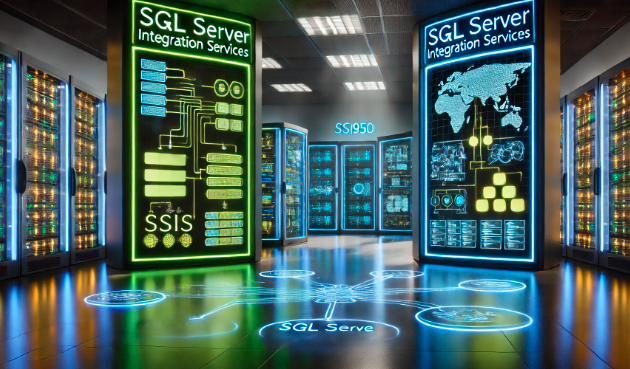
Introduction to SSIS 950
SQL Server Integration Services (SSIS) is a powerful data integration and workflow automation tool provided by Microsoft. SSIS 950 refers to a specific version format used within SQL Server 2008 and 2008 R2. It plays a crucial role in handling data migration, transformation, and ETL (Extract, Transform, Load) operations efficiently.
SSIS 950 is particularly useful for businesses looking to streamline their data flow across various systems while maintaining security and performance. As organizations rely heavily on data-driven decision-making, SSIS 950 ensures smooth data handling, making it a preferred choice for enterprises.
Key Features of SSIS 950
SSIS 950 offers several features that make it a robust and efficient data integration tool:
- Data Integration Capabilities – SSIS 950 allows seamless integration of various data sources, including relational databases, flat files, and cloud storage.
- Workflow Automation – Automating complex data transformation and loading processes is a key strength of SSIS 950.
- Error Handling Mechanisms – Advanced logging and debugging tools help users track and resolve errors effectively.
- Scalability – Whether handling small datasets or large-scale enterprise data, SSIS 950 can efficiently manage different workloads.
- Performance Optimization – SSIS 950 provides options for parallel processing and memory optimization, ensuring high efficiency.
- Security Features – Encryption and access control mechanisms safeguard sensitive data.
Architecture of SSIS 950
The architecture of SSIS 950 consists of multiple components that work together to process and manage data effectively:
| Component | Function |
|---|---|
| Control Flow | Defines the sequence and execution of tasks. |
| Data Flow | Handles the extraction, transformation, and loading of data. |
| Event Handlers | Responds to runtime events and errors. |
| SSIS Catalog | Stores SSIS packages and manages configurations. |
| Package Explorer | Provides an overview of the entire SSIS package. |
SSIS 950 follows a modular approach, allowing developers to create reusable packages that enhance efficiency and reduce redundancy.
Setting Up SSIS 950
System Requirements
To install and configure SSIS 950, ensure the system meets the following requirements:
- Operating System: Windows Server 2008/2012
- Database Engine: SQL Server 2008 or 2008 R2
- Memory: Minimum 4GB RAM (Recommended 8GB+ for large workloads)
- Storage: At least 10GB of free space
- .NET Framework: Version 3.5 or later
Installation Steps
- Download and install SQL Server 2008 or 2008 R2.
- Select Integration Services during the installation process.
- Configure SSIS 950 using SQL Server Configuration Manager.
- Install SSMS (SQL Server Management Studio) for managing SSIS packages.
- Verify installation by running a test package.
Developing SSIS 950 Packages
Creating SSIS 950 packages involves multiple steps, including setting up data sources, defining workflows, and configuring transformations.
Basic Steps to Create an SSIS 950 Package
- Open SQL Server Data Tools (SSDT).
- Create a new SSIS project and add a new package.
- Define control flow tasks to manage the execution sequence.
- Configure data flow tasks to specify source and destination connections.
- Apply transformations such as sorting, aggregations, and lookups.
- Set up logging and error handling mechanisms.
- Execute and debug the package to ensure functionality.
Performance Optimization in SSIS 950
Optimizing SSIS 950 packages ensures smooth execution and better resource utilization:
- Use Parallel Processing: Splitting tasks across multiple threads improves execution speed.
- Optimize Data Flow Buffers: Adjust buffer size settings for optimal memory usage.
- Reduce Unnecessary Transformations: Avoid redundant operations that increase processing time.
- Use Bulk Insert Operations: Loading large datasets using bulk insert improves performance.
- Enable Caching: Reusing lookup data can reduce execution time.
Deployment Strategies for SSIS 950
Deploying SSIS 950 Packages
Once an SSIS package is developed and tested, it needs to be deployed for execution. There are several ways to deploy SSIS 950 packages:
- File System Deployment – Packages are stored in a designated folder and executed using SQL Server Agent.
- SQL Server Deployment – Packages are stored in the MSDB database and managed through SQL Server.
- SSIS Catalog Deployment – Introduced in later versions, allowing better management and monitoring of packages.
Each method has its own benefits depending on the organization’s requirements.
Error Handling and Debugging in SSIS 950
Error handling is an essential aspect of SSIS 950, ensuring that data integrity is maintained throughout the ETL process. Key debugging techniques include:
- Using Event Handlers: Capture errors and warnings for better troubleshooting.
- Configuring Logging: Generate detailed logs for analysis.
- Setting Breakpoints: Pause execution to inspect variables and data flow.
- Using Precedence Constraints: Define conditions for task execution based on success or failure.
Security Measures in SSIS 950
SSIS 950 provides multiple security options to protect sensitive data:
- Package Protection Levels: Configure different security settings such as encrypting sensitive data.
- Access Control: Restrict user permissions to prevent unauthorized access.
- Data Encryption: Secure sensitive information within SSIS packages.
- Audit Logging: Maintain records of data movements for compliance.
Future Trends in SSIS and Data Integration
While SSIS 950 remains relevant for many businesses, modern data integration trends focus on:
- Cloud-based ETL solutions like Azure Data Factory.
- Machine learning integration for predictive data analytics.
- Real-time data streaming using modern frameworks.
- Enhanced AI-driven automation to reduce manual intervention.
Conclusion
SSIS 950 is a robust solution for data integration, offering extensive features for managing ETL workflows. Understanding its capabilities, deployment strategies, and optimization techniques allows organizations to leverage its full potential. As businesses continue to evolve, upgrading to newer SSIS versions and cloud-based integration platforms will enhance scalability and efficiency.
RELATED ARTICLES
The Ultimate Guide to GoMyFinance.com Bills
Zerodevices.net: A Comprehensive Guide to Smart Tech and Innovation
GoMyFinance Invest: A Comprehensive Guide to Smarter Investing







